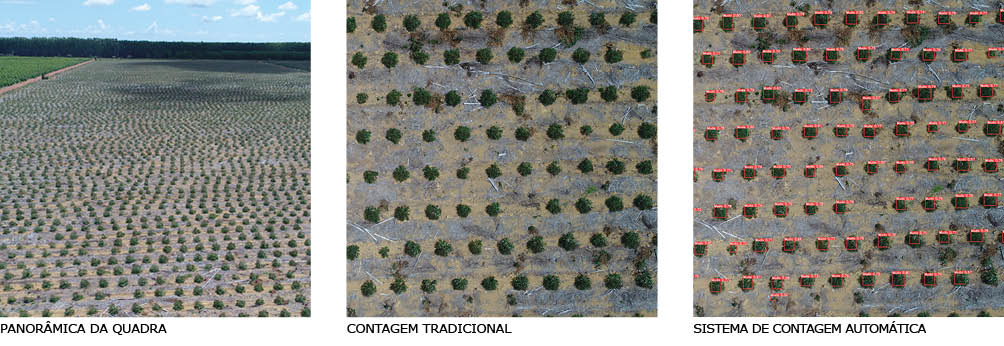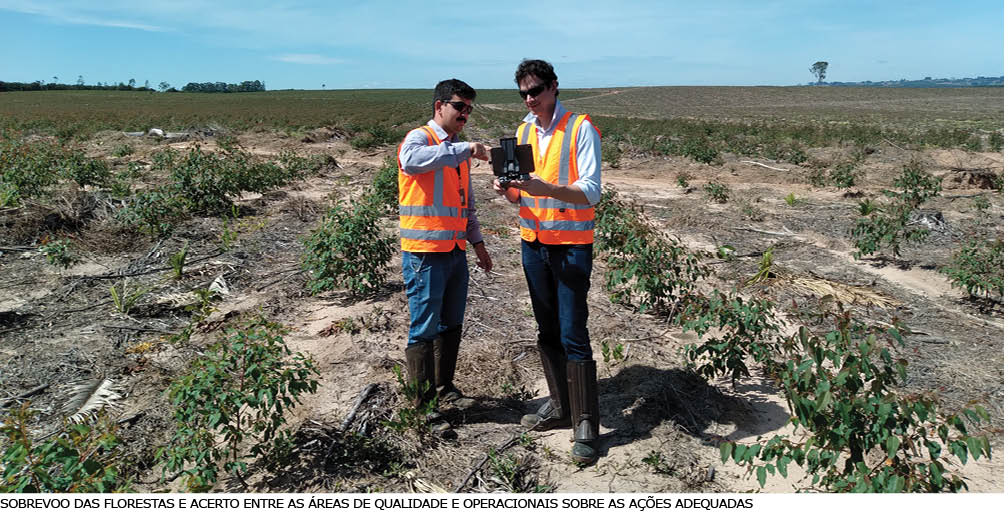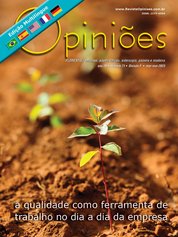Matheus Esteves
Gerente de Qualidade e Negócios Florestais da Dexco
OpCP71
Simplificação e proximidade para viabilizar a promoção da cultura
Após década de estabilização e até redução dos preços da madeira, o Brasil agora passa por crescentes expansões de áreas plantadas de florestas. Alguns ativos florestais, de pequenos a grandes, passaram a ter sentido com os novos projetos inaugurados, ampliados e previstos.
Os usos e consumos da madeira cresceram, seja para energia, painéis, papel e celulose, exportações, e isso acelerou a colheita das florestas e, de imediato, a redução da idade média dessas florestas no País.
A corrida pela reposição florestal dessas áreas e expansão em novas ganhou um ritmo nunca antes presenciado, mesmo com as últimas altas de preços dos defensivos, fertilizantes, combustíveis e maquinários, que caminharam contra essa necessidade.
A diversidade de pensamentos, fruto das diferentes escolas vividas pelos profissionais, tem sido importante para rever aquilo que é essencial e garantir a manutenção dos níveis de qualidade. A criação de ambientes colaborativos e participativos tem catalisado as trocas dessas experiências.
Mas o que tem de novo em plantar e cuidar de uma floresta? De modo geral, no Brasil, as reposições e a ampliação desses ativos estão ocorrendo em ambientes edafoclimáticos diferentes dos já conhecidos pelos profissionais e antigos times. Oportunidades em áreas nobres, com altos índices de sítio, relevo plano e com logística de baixo custo dão espaço a encostas, menores áreas e regiões com menor potencial produtivo.
O perfil do trabalhador tipicamente rural já não existe, e não somente treinamentos passam a ser mais intensos e necessários: a proximidade dos gestores, sua habilidade de comunicação, o exercício da empatia e de proporcionar bem-estar, cuidando de suas equipes de tratoristas, trabalhadores rurais, operadores, vigias, motoristas estão sendo os modelos de maior sucesso para a entrega de resultados.

Para manter e superar indicadores de qualidade de processos e de florestas dentro de margens preestabelecidas, a Dexco, além da formação e da troca de vivências entre mais e menos experientes nas unidades operacionais, tem atuado fortemente no posicionamento das equipes que medem e monitoram qualidade, no princípio do Ver e Agir. As oportunidades de identificação de anomalias são tão grandes quanto as oportunidades de reestabelecer processos dentro dessas margens previstas, através da proximidade, da orientação e do estabelecimento de compromissos.
Superamos aquela fase em que apenas as equipes de qualidade eram donas do assunto e atuavam como fiscalizadores de entregas. A evolução ocorreu e segue na contribuição e orientação das equipes:
1. No momento das aferições dos processos enquanto ocorrem e a que chamamos de avaliações de primeiro nível;
2. No momento dos levantamentos de qualidade da floresta aos 45 dias, ajudando no direcionamento das operações prioritárias;
3. Nas avaliações de florestas de 3 a 12 meses, com ótimas reflexões juntos aos gestores e estabelecimento, em conjunto, de planos de ação direcionados.

A estrutura operacional da qualidade, organizada para garantir suporte às ofertas de processos e florestas da Dexco, e também da LD Celulose (união Dexco e Lenzing) e Caetex Florestal (união Dexco e Usina Caeté), atua em frentes de avaliações de processos de silvicultura, colheita, pátio de madeira, manutenção mecânica e avaliações de florestas com 45 dias, 3 a 6 meses e 12 meses. O grupo é formado por profissionais de diversos perfis e experiências anteriores, reunindo-se em engenheiro extensionista, técnico, especialista, analista, desenvolvedor/programador. E, aqui, temos a satisfação de compartilhar que equipes compostas por perfis que se complementam geram valor, resultados e bom clima de trabalho.
As equipes de qualidade, hoje, são percebidas sem sentimentos de medo, e sim como auxiliadoras, com um mesmo propósito, e parceiras na antecipação de desvios que possam acontecer.
Desde a aquisição dos primeiros drones em 2016, as rotinas e os cronogramas de monitoramento das equipes de qualidade passaram a ser frequentes e logo descentralizados, com a disponibilização de drones similares nas unidades operacionais para que fossem utilizados como mais uma ferramenta de trabalho.
Nas unidades operacionais, mantivemos a estratégia de uso de equipamentos portáteis, robustos e que possam auxiliar com rapidez e agilidade, a tempo de quaisquer intervenções (ex.: matocompetição, danos causados por formigas, erosões).

Para suportar e dar agilidade às numerosas avaliações de florestas, sistematizadas e executadas pela equipe de qualidade, as análises quantitativas de sobrevivência e lotação aos 3 meses de idade, antes feitas totalmente de forma manual, foram dando espaço a um sistema de contagem automática desenvolvido internamente pela equipe e com precisão que pode chegar a 98%, no caso de florestas com alta qualidade (alta homogeneidade de plantio e sem interferência de mato ou similares).
O sistema de contagem automática de mudas desenvolvido internamente utilizou-se de várias características de florestas para compor um banco de imagens capaz de sustentar uma precisão requerida em situações de floresta com qualidade. Para casos em que há interferência de visualização da muda ou heterogeneidade de plantio, o sistema segue em melhoria do seu banco de dados.
O acompanhamento dos planos de ação construídos nas avaliações de processos e de florestas, acordados junto às unidades operacionais, faz parte das atribuições da área, assim como promover, junto às áreas de desenvolvimento, nutrição e manejo, melhoramento genético e mecanização, o necessário apoio e suporte às operações.
A frase de William Edwards Deming, referência na gestão da qualidade, que “não se gerencia o que não se mede, não se mede o que não se define, não se define o que não se entende, e não há sucesso no que não se gerencia”, mantém-se atual, e o entendimento e a internalização dos conceitos de qualidade de processos e, por consequência, o que se espera da entrega do nosso produto floresta, devem estar principalmente nas rotinas daqueles que realizam. Isso é o maior propósito e o que mais almejamos como área de qualidade.
Por fim, para garantirmos sucesso na promoção de uma cultura de qualidade, precisamos construir uma forte relação de confiança, proximidade com as equipes, internalização dos conceitos e alinhamento de todos em um mesmo propósito: melhorar sempre.




